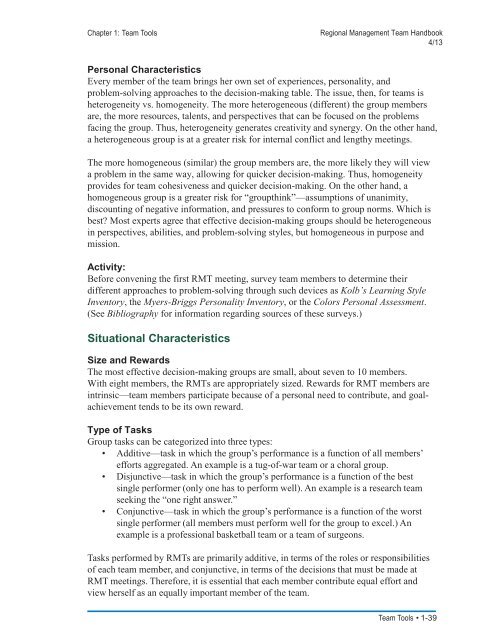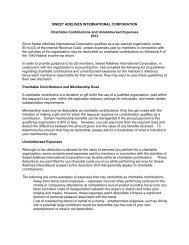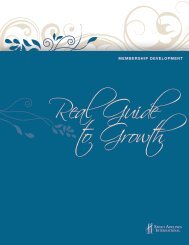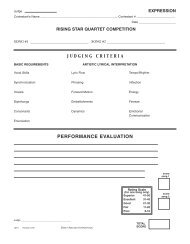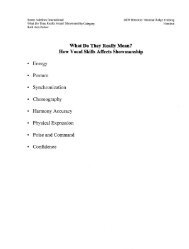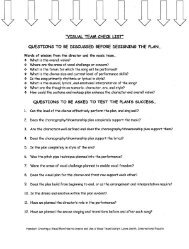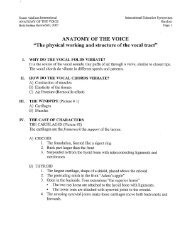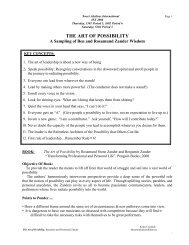Coordinator - Sweet Adelines International
Coordinator - Sweet Adelines International
Coordinator - Sweet Adelines International
Create successful ePaper yourself
Turn your PDF publications into a flip-book with our unique Google optimized e-Paper software.
Chapter 1: Team Tools<br />
Regional Management Team Handbook<br />
4/13<br />
Personal Characteristics<br />
Every member of the team brings her own set of experiences, personality, and<br />
problem-solving approaches to the decision-making table. The issue, then, for teams is<br />
heterogeneity vs. homogeneity. The more heterogeneous (different) the group members<br />
are, the more resources, talents, and perspectives that can be focused on the problems<br />
facing the group. Thus, heterogeneity generates creativity and synergy. On the other hand,<br />
a heterogeneous group is at a greater risk for internal conflict and lengthy meetings.<br />
The more homogeneous (similar) the group members are, the more likely they will view<br />
a problem in the same way, allowing for quicker decision-making. Thus, homogeneity<br />
provides for team cohesiveness and quicker decision-making. On the other hand, a<br />
homogeneous group is a greater risk for “groupthink”—assumptions of unanimity,<br />
discounting of negative information, and pressures to conform to group norms. Which is<br />
best? Most experts agree that effective decision-making groups should be heterogeneous<br />
in perspectives, abilities, and problem-solving styles, but homogeneous in purpose and<br />
mission.<br />
Activity:<br />
Before convening the first RMT meeting, survey team members to determine their<br />
different approaches to problem-solving through such devices as Kolb’s Learning Style<br />
Inventory, the Myers-Briggs Personality Inventory, or the Colors Personal Assessment.<br />
(See Bibliography for information regarding sources of these surveys.)<br />
Situational Characteristics<br />
Size and Rewards<br />
The most effective decision-making groups are small, about seven to 10 members.<br />
With eight members, the RMTs are appropriately sized. Rewards for RMT members are<br />
intrinsic—team members participate because of a personal need to contribute, and goalachievement<br />
tends to be its own reward.<br />
Type of Tasks<br />
Group tasks can be categorized into three types:<br />
• Additive—task in which the group’s performance is a function of all members’<br />
efforts aggregated. An example is a tug-of-war team or a choral group.<br />
• Disjunctive—task in which the group’s performance is a function of the best<br />
single performer (only one has to perform well). An example is a research team<br />
seeking the “one right answer.”<br />
• Conjunctive—task in which the group’s performance is a function of the worst<br />
single performer (all members must perform well for the group to excel.) An<br />
example is a professional basketball team or a team of surgeons.<br />
Tasks performed by RMTs are primarily additive, in terms of the roles or responsibilities<br />
of each team member, and conjunctive, in terms of the decisions that must be made at<br />
RMT meetings. Therefore, it is essential that each member contribute equal effort and<br />
view herself as an equally important member of the team.<br />
Team Tools • 1-39


